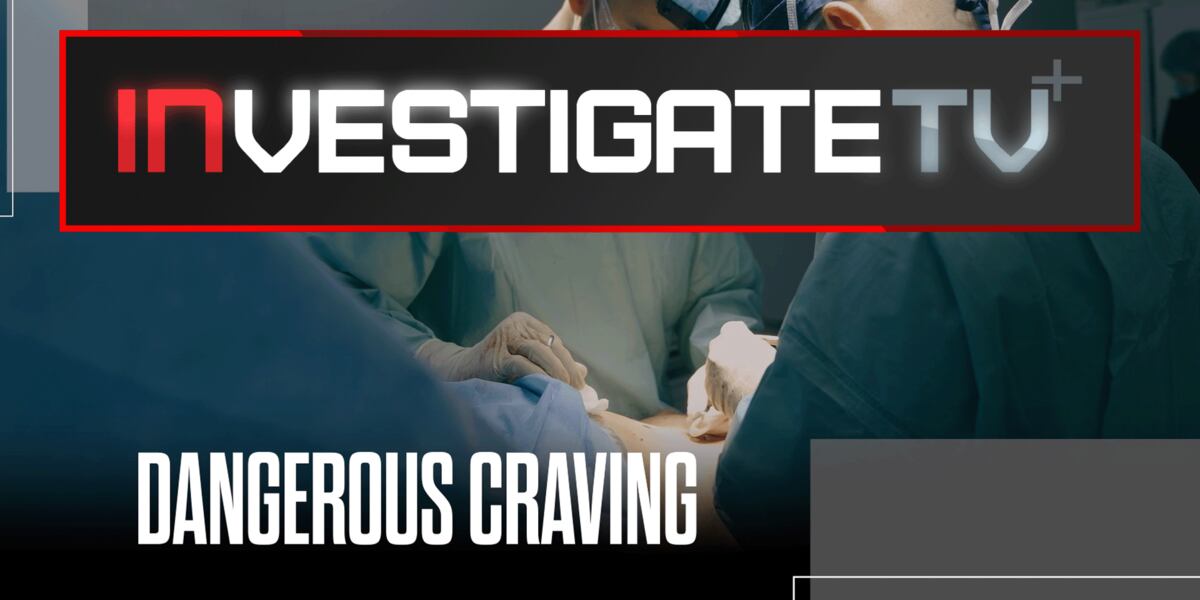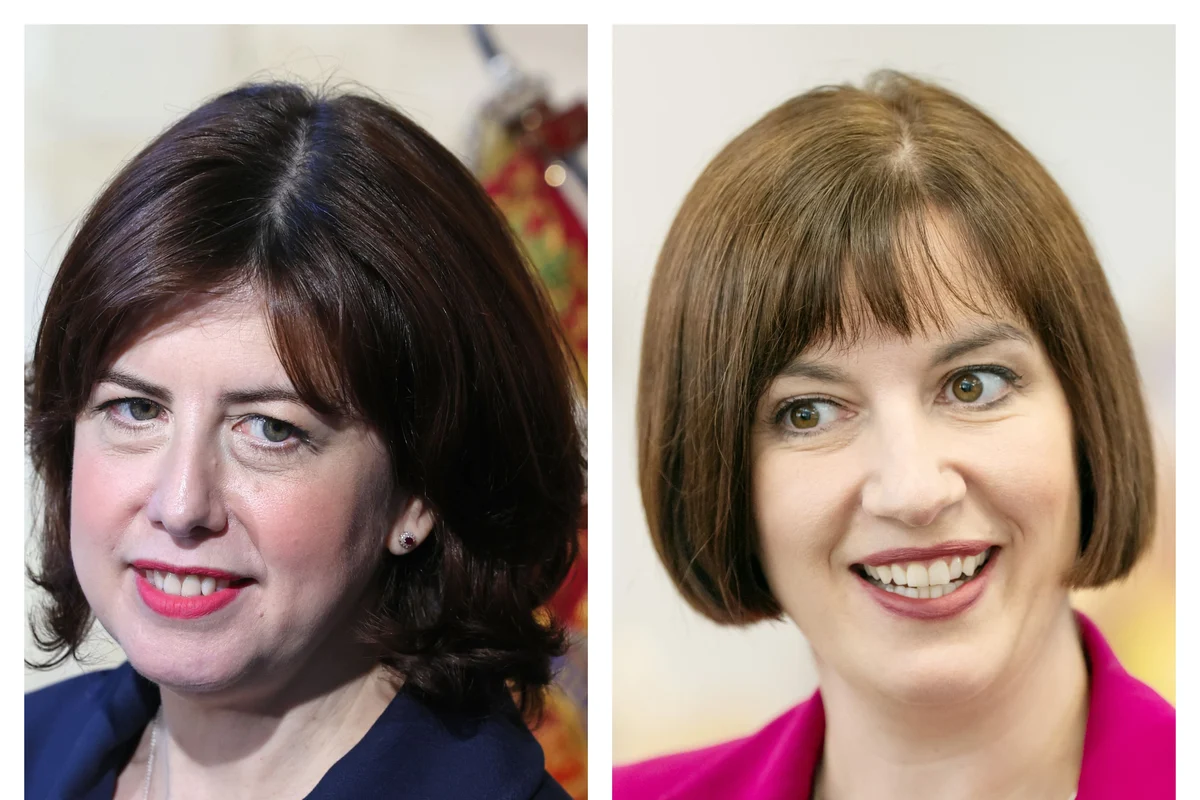
(InvestigateTV) — Weight loss surgery can be life-changing, but for some patients, replacing the desire for food means developing another dangerous craving.
InvestigateTV+ explores a diverse range of stories that delve into the hidden risks of a popular medical procedure, the evolving challenges of parenting in a digital world, the incredible resilience of the human heart, and the enduring power of a handwritten letter.
In this episode, we examine:
A little-known but potentially deadly complication of weight loss surgery, called transfer addiction, is leaving some patients battling a new demon.
Innocent-looking emojis and acronyms can hide a secret, darker meaning, creating a new challenge for parents trying to keep their children safe online.
A second grader’s routine check-up leads to the discovery of a congenital heart defect and a life-saving open-heart surgery.
After 60 years of exchanging letters across the Atlantic, two pen pals meet for the first time, proving that some bonds are worth the wait.
What is Transfer Addiction? An in-depth look at a hidden risk of weight loss surgery
For individuals struggling with severe obesity, bariatric surgery can be a life-changing and often life-saving, procedure.
It can lead to dramatic weight loss, improved health, and a newfound sense of confidence.
However, the surgery comes with a little-known and potentially deadly complication known as transfer addiction for some patients.
The story of Carey, as told by her sister Amanda, is a heartbreaking example of this hidden risk. After her bariatric surgery, Carey was happier and more social than ever. The surgery was, by all accounts, a success. But about two years later, Amanda noticed a disturbing change.
Carey, who had rarely consumed alcohol before her surgery, was now drinking heavily and becoming intoxicated after just a couple of drinks.
Amanda believes her sister was suffering from transfer addiction, a phenomenon where a person swaps their compulsive behavior with food for another addiction, such as alcohol, drugs, or gambling. The Obesity Action Coalition estimates that as many as 30% of bariatric surgery patients may experience it.
Despite the known risks of alcohol use after surgery—which can lead to rapid intoxication, dehydration, and malnutrition—the medical community is not required to educate patients about transfer addiction specifically.
Dr. Ann Rogers, president of the American Society for Metabolic and Bariatric Surgery, says that the sheer volume of information given to patients can be overwhelming, and that there is not enough research to definitively prove the existence of “food addiction” in the same way as other substance addictions.
Carey’s story ended in tragedy.
After multiple stints in rehab, she died of alcohol poisoning in 2018. Her sister, Amanda, is now sharing her story in the hopes of raising awareness and encouraging the medical community to make education about transfer addiction a mandatory part of the pre-surgery process.
“I would tell them they can have my grief and they can have my pain and they can have my anger,” she says, a powerful plea to prevent another family from enduring the same loss.
The Secret Language of Emojis: Decoding your child’s digital world
In today’s digital world, a single emoji can speak volumes. But what if those innocent-looking symbols are hiding a secret, darker meaning? For parents, navigating the ever-evolving landscape of their children’s online communication is a daunting task, and a new “secret language” of emojis and acronyms is making it even more challenging.
A chart that recently went viral, created by the group Four Working Parents, detailed a list of “sinister emojis”—symbols that can be used to represent everything from drugs and sex to self-harm and extremism. A bowl of noodles could be a request for nude photos. A pair of scissors could signify self-harm.
We sat down with a group of moms who were shocked to learn the hidden meanings behind some of these common symbols. Acronyms like “CD9” (parents are around) and “GNOC” (get naked on camera) were completely foreign to them.
“I felt like, somber and like, shocked a little bit,” one mom said.
Tracy Foster, co-founder of Screen Sanity, an organization that helps parents navigate the digital world, says that every generation has its coded language. She emphasizes the importance of open communication and curiosity. “So often, if you just start to show curiosity and an appreciation for their knowledge, they’ll start to open up,” she says.
It’s not about spying, but about staying informed and helping kids understand the weight of their words, whether they are explicit or coded. Resources like the website Bark, which provides parental control and monitoring services, can help flag potentially dangerous language. But the most powerful tool, experts say, is an ongoing, honest conversation between parents and their children.
A Mended Heart: A Little Girl’s Miraculous Journey
Millie Haenlein is a thriving second grader who loves soccer, cheerleading, and gymnastics. To see her today, you would never know that just a short time ago, her heart wasn’t beating for nearly six hours during a life-saving open-chest surgery.
Her journey began with a routine check-up, where her new pediatrician detected a suspicious heart murmur. Further tests revealed a shocking diagnosis: Millie had a congenital heart defect, a hole between the two top chambers of her heart, and an abnormal vein. It was a condition that had gone undetected since birth.
“Millie’s case was a little bit different because the vast majority of congenital heart defects that require surgical intervention are diagnosed prenatally or as infants,” explains her pediatric cardiologist, Dr. Stephanie Lacey.
Within three weeks of the diagnosis, six-and-a-half-year-old Millie was in the operating room at Children’s National Hospital in D.C. For her parents, the wait was agonizing. “I could not think about that without completely breaking down,” her mother recalls.
But the surgery was a success. Millie’s recovery was remarkably speedy, surprising even the hospital staff. The change in her was immediate and profound. “She absolutely has a ton more energy,” her parents say. “She’s grown a couple of inches. It was a significant change.”
Today, Millie is back to doing all the things she loves, with a new scar that her parents tell her to wear proudly as a reminder of her strength.
A 60-Year Friendship, Sealed with a Hug
In an age of instant messages and video calls, the art of letter writing may seem like a relic of the past. But for Debbie Haskins of Vermont and her friend Angela in England, it has been the thread that has woven together a remarkable 60-year friendship.
The two have been pen pals since they were 15-year-old students in 1965. For six decades, they have shared their lives through handwritten letters, chronicling everything from pop music and fashion to marriage and family. They have never spoken on the phone, never emailed, and never met in person.
Debbie has saved every letter, a priceless collection of memories. “To get a letter from her was the highlight of my high school career,” she says, reading from Angela’s very first letter.
But as the years went by, there was one thing missing. “It was my one bucket list thing that I never got to do,” Debbie says of meeting her lifelong friend.
Her friends decided to make that dream a reality, organizing a trip for Debbie to fly across the pond. After getting her first passport, she landed in London and made the most nerve-wracking phone call of her life.
“I’m Debbie,” she said into the phone. “Angela? My God, it’s you,” came the reply. It was the first time they had ever heard each other’s voices.
The next day, they met.
After 60 years of written correspondence, the two friends, now 75, finally shared a hug.
“She whispered in my ear, ‘This I’ll never forget today. I’ll never forget this,’” Debbie recalls.



